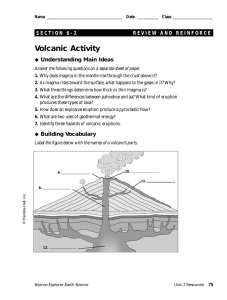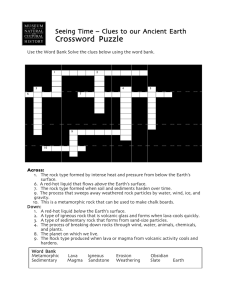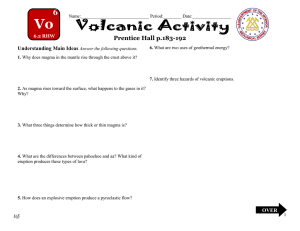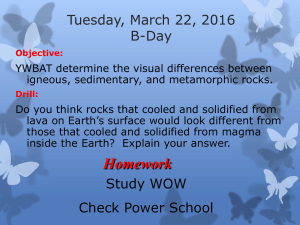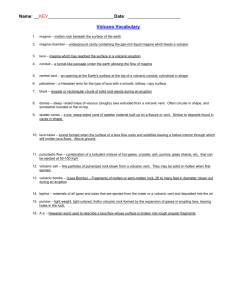Chapter 13 Definitions
advertisement
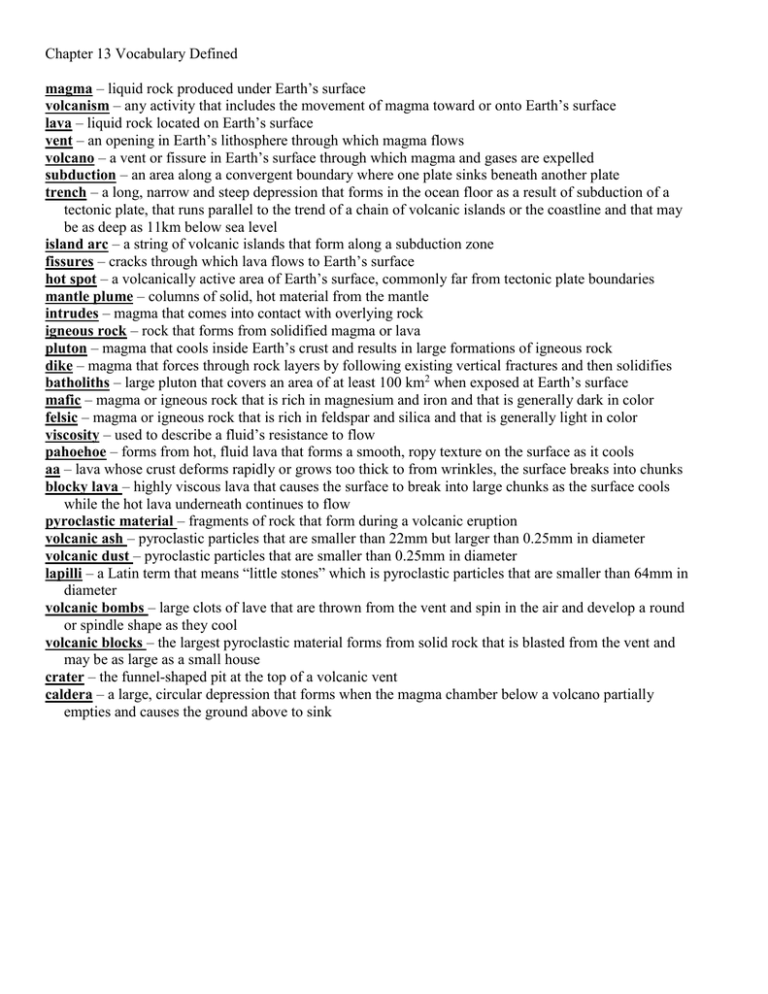
Chapter 13 Vocabulary Defined magma – liquid rock produced under Earth’s surface volcanism – any activity that includes the movement of magma toward or onto Earth’s surface lava – liquid rock located on Earth’s surface vent – an opening in Earth’s lithosphere through which magma flows volcano – a vent or fissure in Earth’s surface through which magma and gases are expelled subduction – an area along a convergent boundary where one plate sinks beneath another plate trench – a long, narrow and steep depression that forms in the ocean floor as a result of subduction of a tectonic plate, that runs parallel to the trend of a chain of volcanic islands or the coastline and that may be as deep as 11km below sea level island arc – a string of volcanic islands that form along a subduction zone fissures – cracks through which lava flows to Earth’s surface hot spot – a volcanically active area of Earth’s surface, commonly far from tectonic plate boundaries mantle plume – columns of solid, hot material from the mantle intrudes – magma that comes into contact with overlying rock igneous rock – rock that forms from solidified magma or lava pluton – magma that cools inside Earth’s crust and results in large formations of igneous rock dike – magma that forces through rock layers by following existing vertical fractures and then solidifies batholiths – large pluton that covers an area of at least 100 km2 when exposed at Earth’s surface mafic – magma or igneous rock that is rich in magnesium and iron and that is generally dark in color felsic – magma or igneous rock that is rich in feldspar and silica and that is generally light in color viscosity – used to describe a fluid’s resistance to flow pahoehoe – forms from hot, fluid lava that forms a smooth, ropy texture on the surface as it cools aa – lava whose crust deforms rapidly or grows too thick to from wrinkles, the surface breaks into chunks blocky lava – highly viscous lava that causes the surface to break into large chunks as the surface cools while the hot lava underneath continues to flow pyroclastic material – fragments of rock that form during a volcanic eruption volcanic ash – pyroclastic particles that are smaller than 22mm but larger than 0.25mm in diameter volcanic dust – pyroclastic particles that are smaller than 0.25mm in diameter lapilli – a Latin term that means “little stones” which is pyroclastic particles that are smaller than 64mm in diameter volcanic bombs – large clots of lave that are thrown from the vent and spin in the air and develop a round or spindle shape as they cool volcanic blocks – the largest pyroclastic material forms from solid rock that is blasted from the vent and may be as large as a small house crater – the funnel-shaped pit at the top of a volcanic vent caldera – a large, circular depression that forms when the magma chamber below a volcano partially empties and causes the ground above to sink
